The Belt and Road Initiative (BRI) has now entered into its fifth year of diversified but integrated operations. China proposed BRI which has been a large part of the investment landscape across a swathe of the world for five years will become increasingly important. BRI has completed diversified mega projects in all the participating countries around the globe. It was launched by President Xi Jinping in 2013 as the Silk Road Economic Belt and 21st Century Maritime Silk Road. The BRI developed out of China’s “Go Out” policy focused on promoting outbound Chinese Investment in overseas assets.
BRI: A Strategic Initiative
It consists of two parts: The “Belt” which reinvents the ancient Silk Road land route, and the “Road” which is a route through various oceans. It is the greatest ever project introduced to the world. Its dimensions are huge.
BRI is the most important strategic initiative on the planet since it provides a solution for several of the most challenging problems humanity faces today. It overcomes geopolitics, which was the cause of numerous wars in history and two world wars in the 20th century, by replacing it with an inclusive win-win cooperation of potentially all nations on earth. It provides for an alternative economic model focusing on the real economy.
BRI: A New World Economic Order
Since its inception it has produced serious dents into hegemonic world economic order and also changed the dynamics and scope of regional integration. BRI has been written into the Communist Party’s constitution in 2017 which shows its significance and an indication that Beijing wants to boost the participation of private firms. BRI’s ambition is to improve connectivity between Asia, Europe and Africa, and in that way to increase trade, development and prosperity.
BRI: A Mammoth Ambitious Geostrategic Initiative
It has become a mammoth ambitious geostrategic initiative in contemporary history of world politics. So far 65 countries have joined the BRI. It will create over 200,000 jobs. Rations of Foreign Direct Investments (FDIs) have reached up to $70 Billion mark. 75 overseas joint economic projects were initiated, 38 bilateral agreements were made between China and other countries, 403 direct flight routes and new shipping routes connecting 47 countries have been set up, and this year alone over $47.8 billion worth of engineering contracts were awarded.
China’s Commitments
China is willing to spend an estimated $5 trillion on infrastructure development that spans across Asia, the Middle East, Europe and Africa. To make this global project a success, the global program is divided into two parts-Silk Road Economic Belt (SREB) and 21st Century Maritime Silk Road (CMSR).
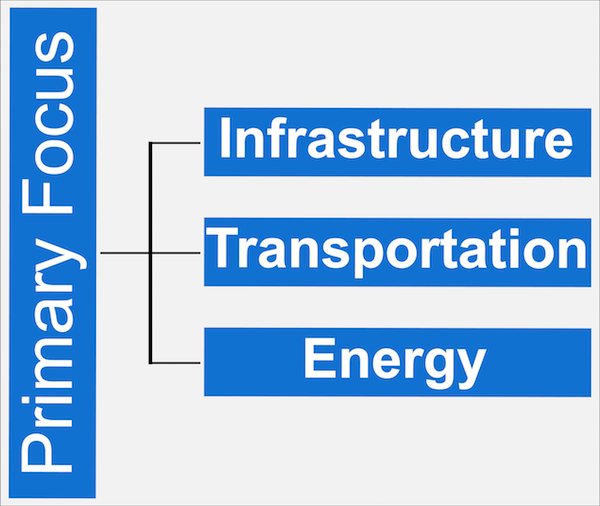
Benefits to Partners
It will help all partners enhance regional and economic growth, and for initial financial investment China has planned to spend an estimated $4-8 trillion on this mega project. For this purpose, it has established local banks, and in 2014 Beijing also established the $40 billion Silk Road Fund. Through BRI, the Chinese markets will be open for potential investors while other countries can benefit from China’s growing local economy.
CPEC: Crown of BRI
Moreover, CPEC continues to remain the crown of the BRI and is one of its fastest and most effective projects. Substantial projects such as roads and railway networks, infrastructure developments, Gwadar port development, energy related projects, Orange Line, Yellow Line and power plants will be viable before 2020, and are expected to be quite a boost for Pakistan’s economy.
BRI: Boost to Chinese Companies
It will also be beneficial for local businesses to be anchored to one of the most robust economies of the world. China has the largest foreign currency reserves of $3.6 trillion, is the largest exporter in the world with $2.34 trillion annual exports and is the third largest importer, with annual imports of $1.96 trillion. They are also now the leading financiers of the Asian Infrastructure and Investment Bank (AIIB), with investments exceeding $20 trillion.

| Proposed corridors | Details |
The New Eurasianland Bridge (NELB) | It links the Pacific to the Atlantic, from China’s coastal cities of Lianyungang and Rizhao, to the Netherland’s Rotterdam and Belgium’s Antwerp. As at August 2017, 20 Chinese cities were connected to 15 European cities by rail. More than 5,000 freight train journeys have been made since the start of the direct rail freight. |
The China-Mongolia-Russia Economic Corridor (CMREC) | It is built on the foundation of the development of trilateral cooperation between China, Russia and Mongolia signed in June 2016. It connects the Chinese BRI, the Russian Trans-Eurasian Belt and the Mongolian Steppe Route projects. One of the most significant projects is Amur Bridge which is due to be completed in 2019, linking northernmost China with south-eastern. |
China Central And West Asia Economic Corridor (CCWAEC) | It links China and the Arab countries. It mostly follows the trajectory of the ancient Silk Road. It starts in Xinjiang in Western China and joins five Central Asia countries (Kazakhstan, Kyrgystan, Tajikistan, Uzbekistan and Turkmenistan in the journey to the Mediterranean coast and Arabian peninsula through Western Asia across Iran, Iraq and Turkey. |
| China-Pakistan Economic Corridor (CPEC) | CPEC’s 3,000-kilometre-long corridor starts from China’s Kashgar and ends at Pakistan’s Gwadar. It connects the Silk Road Economic Belt in the north and the 21st century Maritime Silk Road in the south. It is a trade network of highways, railways, pipelines and optical cables, and is a flagship project under the Belt and Road Initiative. Notable projects are the Karakoram Highway and the Gwadar deep water port. |
Bangladesh-China-India-Myanmar Economic Corridor (BCIMEC) | It is a hybrid land sea route connecting Kunming in Southern China, through Myanmar and Bangladesh to Kolkata in India. This corridor encompasses expressway, high-speed rail link, air and water way connections as well as power transmission and oil pipelines. The Kolkata and Kunming (K2K) highway and sea routes via the Kaladanmulti-modal transit routes. |
| China-Indochina Peninsula Economic Corridor (BCIMEC) | It aims to connect eight major cities Singapore, Kuala Lumpur, Bangkok, Phnom Penh, Ho Chi Minh City, Vientiane, Hanoi and the Chinese city of Nanning. Additional connectivity nodes would be extended to the major economic hubs of Guangzhou and Hong Kong, linking ten cities. |
| The 21st Century Maritimesilk Road | It is the road of the BRI connecting regional waterways. The China-Indian Ocean-Africa-Mediterranean Sea Blue Economic passage will link the CICPEC running westward from South China Sea to the Indian Ocean. This will connect the CPEC and the BCIMEC. A second blue economic passage connects China-Oceania-South Pacific and a third blue economic passage is envisioned leading up to Europe through the Arctic Ocean. |
BRI: Movers & Shakers of the World
Movers and shakers of the world have been trying to stop or slow down the pace of the BRI through different secretive means they are now using “5th Generation Warfare” against the BRI and its participating countries. Most recently the New York Times published a report (December 2018) accusing China of using BRI for pure military purpose in different parts of the world. The Chinese Foreign Ministry outrightly rejected this notion and termed it “misleading”. Even most of the Western media is rigorously projecting fake news about dentation of a specified minority. CNN, BBC, DW, Aljazeera and CBNC are producing short documentaries about ethnic cleansing of a minority group.
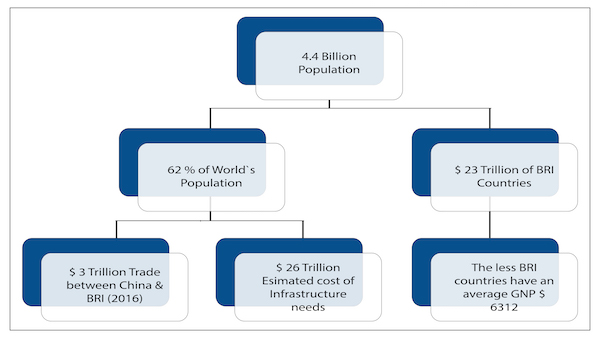
BRI & Enemies of Development
Enemies of development and international system are tirelessly investing money to pollute the minds of so-called global conscious against sever human violations which are totally baseless. Even non state actors are being used to slow down the march of greater regional integration, socio-economic prosperity, financial connectivity and above all people to people better understanding via BRI. Series of biased analysis of debts trap, threats to territorial sovereignty, domination of Chinese companies and rise to new kind of hegemony affecting all the participating countries of the BRI have been published in different newspapers, magazines and journals around the globe.
BRI & Western Unfading Propaganda
Despite Western unfading propaganda, disseminated through different channels the BRI aims to promote policy dialogues, foster connectivity and cooperation in infrastructure, trade, finance, and ‘people to people exchanges’. It aims to connect Asia with Europe and Africa, through the Middle East and reaching Latin American countries. It is expected to raise significant resources from China and various other sources including the private sector to support development mainly infrastructure development and improve growth prospects. BRI stands for consultation, contribution and shared benefits.
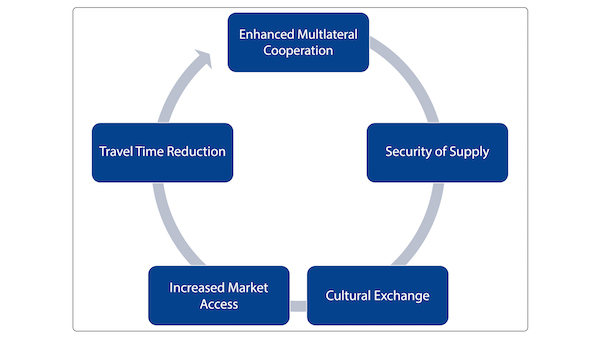
BRI & President Xi Jinping (2018)
Most recently, president Xi Jinping, BRI termed the BRI “the project of the century.” It has no secret agenda and hegemonic plan. BRI’s initial focus was on energy and infrastructure; it is now widening to trade, manufacturing, Internet and tourism.
BRI: Regeneration of the old Silk Road
BRI is a regeneration of the ‘old Silk Road’. a network of trading routes that connected China across Eurasia from the second century BC to the end of the fourteenth century AD. Silk and many other goods were exchanged across these land and maritime routes. In addition to tangible transport, the movement of people aided the transmission of culture, language, knowledge and beliefs along the routes.
BRI & Rise to Multilateralism
It is estimated that as more countries engage around a BRI platform this could open up opportunities to enhance multilateral structures. It would reduce travel time and costs too. Increased connectivity though the creation of economic corridors provides increased and alternative access to primary goods and labour. Moreover, infrastructure linkage supports the potential for development led trade i.e. improved infrastructure will be followed by trade growth increased connectivity also applies in a cultural sense, building stronger ties among the BRI countries.
Strategic Vision of BRI
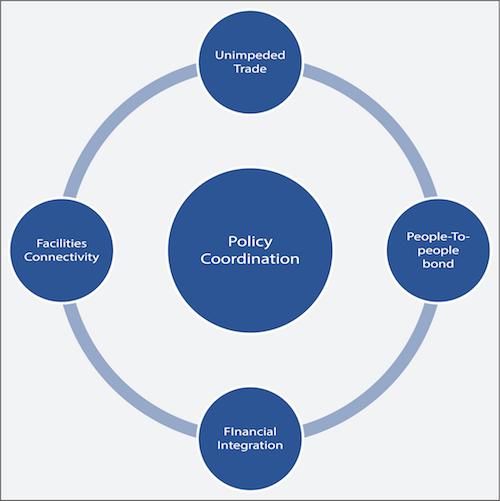
| Attributes | Details |
| Policy Coordination | It promotes intergovernmental cooperation expanding shared interests, enhancing mutual political trust and reaching new cooperation consensus. |
| Facilities Connectivity | It improves connectivity through construction of transport, energy and communications infrastructure and technical systems along the Belt and Road. This includes promotion of green and low-carbon infrastructure. |
| Unimpeded Trade | Improve investment and trade facilitation in all related countries, removing barriers and setting up free trade agreements to create a sound business environment. In addition, cooperation should be advanced in emerging industries and mutual investment areas expanded. |
| People-To-People Bonds | It promotes deepening bilateral and multilateral cooperation through various exchanges along the Belt and Road. These include cultural and academic exchanges to increase links between Belt and Road countries. |
| Financial Integration | It enhances co-ordination of monetary policy, deepen multilateral and bilateral financial co-operation and expand the scope of local currency settlement and currency exchange along the BRI. |
BRI: Answer to Infrastructure Needs
The BRI has the potential to bring much-needed infrastructure to countries and facilitate trade and financial flows, thus acting as a source of growth and fostering international cooperation. Achieving these goals will require strong policy frameworks to ensure high quality projects and sufficient macroeconomic and institutional capacity in partner countries to absorb investment flows, reap the benefits and manage the associated risks.
China has been working with its partners including participating countries and international organizations to make sure the BRI reaches its full potential and the benefits are shared as widely as possible. In particular, close cooperation with the IMF will help in promoting strong policy frameworks as an important pillar for the success of the BRI.
BRI`s Key Benefits
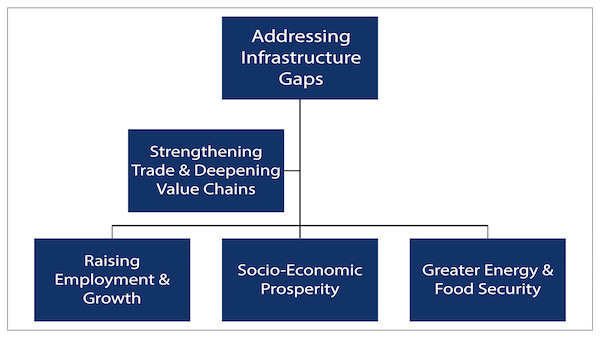
BRI & Financial Growth
It will promote Chinese led financial institutions like the Asian Infrastructure Investment Bank and enhance China’s maritime power in the South China Sea and the Indian Ocean and its littoral regions. It will definitely develop poorer western provinces of China, especially Xinjiang. Creation of an energy route from the Middle East and Africa will act as a proof against any possible prohibition at points like Hormuz and the Malacca strait. Transportation links will help access rich European markets better and boost trade. It will enhance development of ports, railways, pipelines and highways across Asia and the Indian Ocean will help China utilise its excess capacity in steel, cement and infrastructural engineering sectors.
Furthermore, it will help China to compete with Transatlantic Trade and Investment Partnership (TTIP) and Trans-Pacific Partnership (TPP) or any other future mechanisms which seek to establish new trading norms.
| Important Paraments | Details |
| Addressing infrastructure gap | It fills infrastructure gaps and promotes transport, energy infrastructure, telecommunications and financial networks. New investment can be particularly beneficial to countries that struggle to attract sufficient private funding for such projects. |
| Strengthening trade and deepening value chains | Trade flows between the BRI countries and China are already significant. Around 40 percent of China`s exports go to these countries and a third of imports come from them. Better infrastructure, especially regional transport, telecoms, and financial networks can increase trade flows, including among regional partners where trade and other connectivity is often still weak. |
| Raising employment and growth | Building infrastructure is labor intensive. And employing local workers in BRI partner countries can raise employment directly and facilitate knowledge and technology transfer. |
| Socio-Economic Prosperity | BRI is the engine of growth which will enhance socio-economic prosperity of all the participating countries. |
| Greater Energy & Food Security | BRI stands for greater regional connectivity and global networks which are being achieved through sustainable development. It will foster energy and food security mechanism. |
BRI’s Achievements (2017-18)
The BRI has been a successful mega project since its inception, being termed as one of the most profitable initiatives in the world. It has attracted immense ratios of FDIs and benefited national economies of all the participating countries. It has been the hope for recovery of weak global economy and financial constraints.
BRI & China
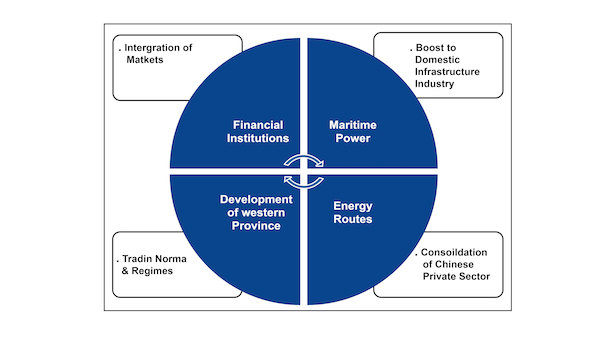
Chinese Ministry of Commerce (2018)
1. Rise to Merchandise Trade
According to Chinese Ministry of Commerce (2018), merchandise trade along the BRI remained strong in the first quarter of 2018. Two-way trade between China and the 65 countries officially under the BRI reached to 19.4 percent year on year to US$287.3bn, up from 13.8 percent expansion in the fourth quarter of 2017. Exports enhanced by 16.5 percent to US$158bn, with imports up by 23.2 percent to US$128.4bn over the same period. China’s trade surplus with BRI countries fell to US$30.4bn in January March, from US$49.9bn in the previous quarter.
2. Rise to Trade Flows
Owing to these strong trade flows, BRI countries played an enhanced role in China’s global trading relations in the first quarter of 2018. BRI countries accounted for 29.1 percent of China’s total exports in January March, up from 27.9 percent in October December 2017. Similarly, imports from the BRI countries represented 25.8 percent of the total in January March, rising from 25.4 percent in the fourth quarter of 2017.
3. Increase to FDIs Ratios
There was also a lift in the role played by BRI countries in China’s overseas direct investment (ODI) flows. Although non-financial ODI flows to BRI countries fell to US$3.6bn in the first quarter of 2018 from US$4.8bn in October-December 2017, this represented 14.2 percent of total ODI flows the highest proportion since the first quarter of last year.
China’s trade and investment links are concentrated on a relatively narrow number. Ten countries accounted for 66.4 percent and 73.3 percent of China’s export and import flows to BRI countries, respectively in the first quarter of 2018, led by Vietnam, Malaysia, Russia, Indonesia and Thailand. Most of China’s ODI flows to the BRI similarly went to a select number, led by Singapore, Malaysia, Indonesia and Vietnam.
Somehow, constant political instability and chaos in Pakistan (CPEC), Sri Lanka, Cambodia, Laos and eastern African countries have decreased BRI pace. It suggests that Chinese companies engaging with the BRI are seeking out the more developed and stable, markets included in the initiative.
4. Comprehensive Policy Formation
Regulations on outbound investment, formulated by the National Development and Reform Commission (NDRC), became effective on March 2018. The “NDRC 11”, new regulations streamlined approvals for BRI investment, while also imposing tougher regulatory controls over investments identified as “restricted” or “prohibited” under the investment regulatory regime. Several domestic policy initiatives have aimed to shore up support for the BRI.
5. Financial Innovations/Rise to Bond Markets
Hongshi Holding Group, a privately owned cement maker, issued the first BRI bond on the Shanghai Stock Exchange valued at Rmb300m (US$47m) in January 2018. In March 2018 the China Securities Regulatory Commission began formally allowing the issuance of BRI bonds via the Shanghai and Shenzhen stock exchanges, with seven companies receiving approval to issue bonds worth Rmb50bn (US$7.8bn). The financing is designed to support specific projects and opens up another (small) channel for BRI fundraising besides direct borrowing from policy and commercial banks.
6. Supportive Role of China’s Regional Governments
Meanwhile, China’s regional governments are aligning themselves with the BRI. In March the NDRC issued a development plan covering the period to 2035 for a Lanzhou-Xinning city cluster in western Gansu province, which aims to position Gansu as a BRI logistics centre through the construction of energy pipelines and transport infrastructure, including in rail, road and air. The NDRC released a similar urban-cluster development plan spanning, Shanxi and parts of Gansu in February 2018.
PROJECT DEVELOPMENT (2017-18)
a. Alibaba’s Engagements
China’s technology giants are engaging more with the BRI amid government efforts to encourage greater private-sector participation. In the first quarter of 2018 internet giant Alibaba acquired Daraz, a Pakistani e-commerce company which owns online marketplaces throughout South Asia. Meanwhile, Alibaba’s financial arm, Ant Financial acquired 10 percent of bKash, a mobile financial services provider in Bangladesh. Ant Financial also purchased 45 percent of Pakistan’s Telenor Microfinance Bank, which owns Easypaisa, the largest digital financial services platform in Pakistan.
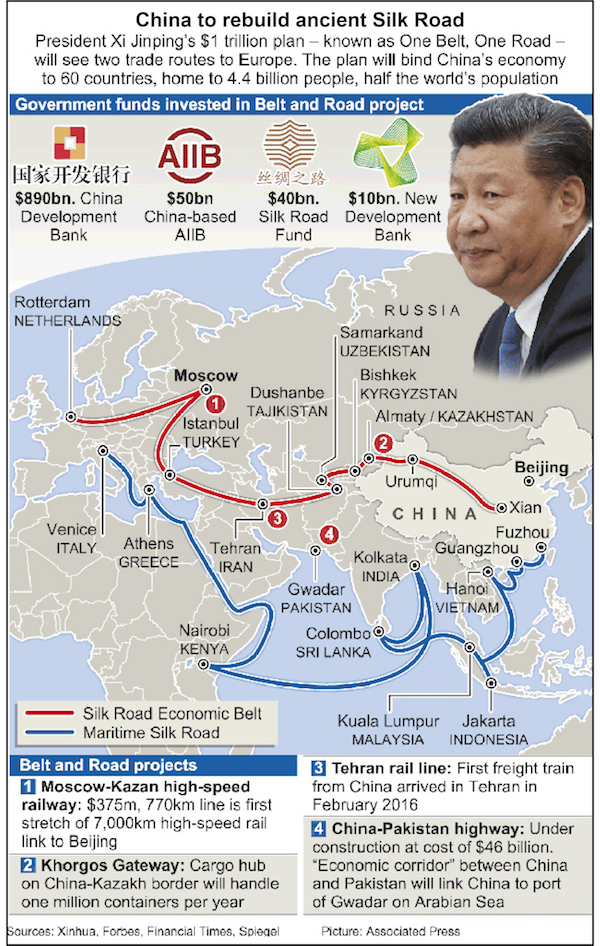
In March 2018 Alibaba and its domestic rival, Tencent launched data centers in Indonesia and India respectively, as part of the global deployment of their competing cloud computing systems. In the same month a Chinese technology company, Cloud walk signed a co-operation agreement for an artificial intelligence (AI) project in Zimbabwe to provide AI-backed services in finance and public security. In April Alibaba’s logistics branch, Cainiao, announced plans to build a smart digital hub in Thailand to support e-commerce across South-east Asia.
b. Shanghai Electric
Meanwhile, China’s investments in BRI energy projects, especially solar power, remain strong. In April 2018 state-owned Shanghai Electric signed an agreement with the Dubai authorities to build a 700-MW concentrated solar power (CSP) project the largest CSP investment in the world. The US$3bn project will support Dubai’s plans to increase the share of clean energy in its power output. We expect both energy and technology projects to continue featuring as hallmark investments under the BRI, as China aims to develop its capacity in these sectors to the world.
As Beijing is celebrating the fifth anniversary of the BRI, China has so far invested at least $900 billion in projects along the BRI countries, mainly in infrastructure, transport and energy.
Investment in BRI projects
According to Chinese Ministry of Commerce (December 2018) China has so far invested more than $900 billion in projects in countries partner to the BRI. Examples are a gas pipeline in Pakistan, a 336 kilometer rail line linking Budapest to Belgrade, and a high-speed rail link in Thailand. In 2016, China established the Asian Infrastructure Investment Bank (AIIB), an international development bank to help build infrastructure in BRI countries almost like the Asia-Pacific equivalent of the IMF.
Xinhua News Agency (December 2018)
According to Xinhua news agency (December 2018) China’s imports and exports with BRI countries reached $860 billion over the first three quarters of the current year, a rise of 13.2 percent from a year earlier. Chinese enterprises have injected a total $10.78 billion of non-financial direct investment in the Belt and Road countries over the same period, a rise of 12.3 percent from last year. In terms of infrastructure projects, the China-Laos railway and the Hungarian-Serbia railway are steadily advancing.
Global Times (November 2018)
Global Times publishes that Chinese state-owned enterprises (SOEs) have in the past five years carried out a total of 3,116 investment projects in countries covered by the BRI. The Greek port of Piraeus owned and operated by COSCO, as well as the Chinese-built railways in Kenya and Ethiopia as examples of successful logistics and transport projects. The SOEs has played a positive role in improving local people’s livelihood. Around 85 percent of the employees at the central state-owned enterprises overseas branches are local people.
So far many countries including Pakistan, Russia, Hungary, New Zealand, Poland, and Serbia have joined the project. Together they make up at least a third of the world’s GDP, over 60 percent of the world’s population and 75 percent of known energy reserves. Most recently the BRI has been open to all countries as well as international and regional organizations.
BRI & European Perspective
From the European perspective, the BRI has the potential to be hugely positive as long as it adheres to EU market rules as well as to international requirements and standards. Europe is a prime investment destination for the BRI. According to Carnegie Endowment for International Peace (2018) despite western propaganda Chinese foreign direct investment in Europe has soared from under €1 billion in 2008 to €35 billion in 2016. It also negates its baseless notion that China’s global rise and its BRI project present a challenge to the West, Beijing is insisting that the BRI seeks mutual understanding and it belongs to the world.
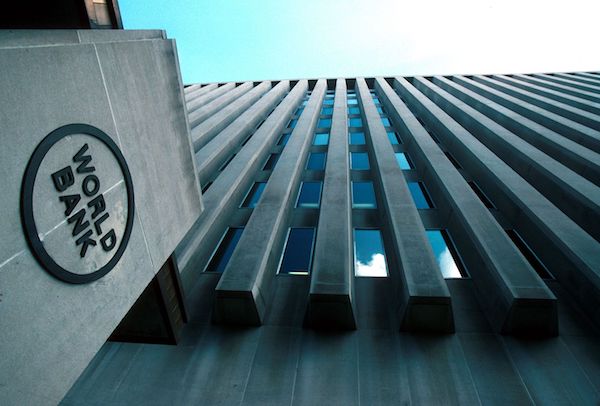
BRI & World Bank (2018)
The World Bank says the BRI offers a unique opportunity to address the large infrastructure gap in developing countries that hampers trade and economic development. Africa has hailed BRI in fostering connectivity and thereby accelerating integration and economic diversification on the continent. It is in line with the United Nations sustainable development goals and the African Union’s Agenda 2063 which is a blueprint for African development and prosperity.
BRI & Africa
It is vital to address the infrastructure deficit in Africa. It is envisioned towards increased understanding, enhanced recognition of multiculturalism and diversity, and peaceful collaboration for achieving mutually rewarding goals and objectives.
The future might be uncertain because of the opposition of the United States and elsewhere accusing China of creating debt traps through its investments in recipient countries. Yet the “project of the century”, as described President Xi, can change the shape of Asia, Africa and parts of Europe by strictly adhering to the principles of open tenders and transparency to reduce the likelihood of failed projects and improve the outcomes for both investors and host community.
Concluding Remarks
China announced the Belt and Road Initiative (BRI) in 2013, aimed at recreating and modernizing ancient Silk Road trade routes. It has now become the signature foreign policy program of Chinese President Xi jinping’s government.
The BRI defines five major priorities including various policy coordination to expand shared interests, enhance mutual trust, and build consensus on further cooperation. Infrastructure development of this scale cannot materialise without regional connectivity. It will link all the sub-regions in Asia and also extends out to Europe and Africa. Transnational trade is one of the primary focuses of the BRI. Unimpeded trade will facilitate more trade between the nations and would remove many barriers of investment and trade and open up free trade areas to create a business-friendly environment at the regional and national level.
It is a development strategy that focuses on connectivity and cooperation on a trans-continental scale. It has the potential to be the largest development project in modern history. In terms of its scope and scale, there can be little doubt because China is playing Santa Claus to the rest of the world, doling out loans to finance-starved countries.
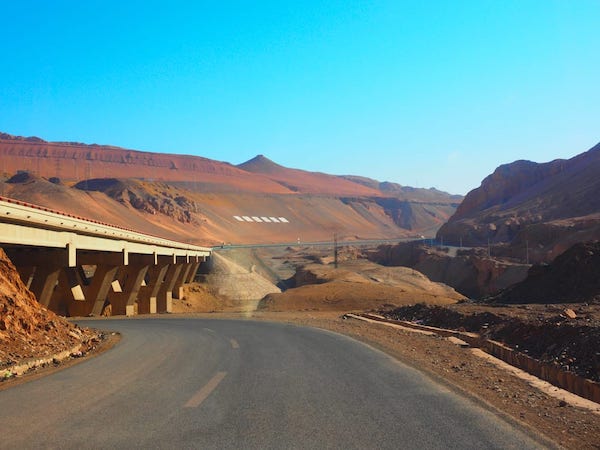
The BRI consists primarily of the Silk Road Economic Belt, linking China to Central and South Asia and onward to Europe and the New Maritime Silk Road linking China to the nations of South East Asia, the Gulf Countries North Africa and on to Europe. Six other economic corridors have been identified to link other countries to the Belt and the Road. The BRI’s geographical area is constantly expanding. So far it covers over 70 countries, accounting for about 65 percent of the world’s population and around one-third of the world’s Gross Domestic Product (GDP). It is the revival of ancient Silk Road.
It is a biblical-size trade and infrastructure endeavor. It is the 21st century Silk Road which could cost 12 times as much as what the U.S. spent on the Marshall Plan to rebuild Europe following World War II. The BRI has the participation of 76 countries from Asia, Africa and Europe, and is poised not only to reshape globe trade but also raise the living standards for more than half of the world’s population.
According to the International Monetary Fund (September 2018), the “BRI has great potential for China and participating countries. It could fill large and long-standing infrastructure gaps in partner countries, boosting their growth prospects, strengthening supply chains and trade and increasing employment.”
Empirical data shows that shipping time is expected to decrease by an average of 1.2 percent after the completion of the BRI. Countries located in the East Asia and Pacific region are expected to experience the largest gains, with an average reduction of shipping time to other countries in the world of 2.31 percent, including a gain of 4.35 percent with respect to countries in South Asia region and 2.87 percent toward countries in Middle East and North Africa.
Results from a quantitative trade model indicate that the BRI will increase GDP between 2.6 percent and 3.9 percent on average for countries in “developing East Asia Pacific,” which is higher than the expected gains for the world as a whole.
It stands for greater socio-economic prosperity regional integration and of course diversity of humanity. It speaks about immense liberalization of economy. It pursues new economic model of globalization where there is no political compulsion and geopolitical constrains. It is free to all the countries and of course organization. It is a mega investment forum which generates remarkable business activities around the globe especially among the BRI countries.
It chalks out new charter of internationalism which promotes to cultural diversity and dignity. It enhances financial integration. It secures energy and food security. It protects environment. It implements renewable energies. It has already revolutionized national economies of the participating countries. Some countries have some concerns which are not resultant of BRI but their own fragile economies and weak political systems.
It will also facilitate financial integration to foster currency stability, build a sound framework for investment, financing, and credit services across Asia, while strengthening the role of institutions such as the Asian Infrastructure Investment Bank (AIIB), the BRICS New Development Bank, the Silk Road Fund, and sovereign wealth funds. It will also promote people to people connectivity. People across borders will have the opportunity to increase interaction and mutual understanding.
Over the past five years, China’s trade with countries along the Belt and Road exceeded USD 5.5 trillion. Chinese direct investment within the non-financial sectors of those countries reached USD 80 billion. China founded 82 overseas economic and trade cooperation zones in those countries, providing USD 8.9 billion worth of funds and creating 244,000 jobs. As of 2018 China signed 16 trade agreements with 24 countries and regional organisations nearly half of them being part of the Belt and Road. Additionally China founded 81 education establishments and 35 cultural centers. Within the first half of 2018, China spent around USD 39.3 million on Silk Road scholarships.
China will likely speed up infrastructure projects in its ambitious Belt and Road Initiative amid trade tensions with the United States. Several Chinese companies and various sectors, including mining and transportation, are poised to benefit from that development. China will likely “escalate the loan and shorten the project approval” process to quicken the pace of infrastructure building so as to diversify trade and economic activities there away from the U.S.
Domestically, the BRI will primarily benefit the Chinese railway sector. China Railway Group and China Railway Construction, Chinese train manufacturer CRRC and China Railway Signal & Communication will be benefited moreover, its building of power plants, telecommunications facilities and ports would also be increased in the future. Commodity and mining, transportation and logistics, as well as financial sectors will also be further developed. Chinese oil and gas company “PetroChina” and the bank of China and Conch Cement will also be well positioned to benefit from the initiative.
China’s massive belt-and-road Initiative infrastructure program has long been viewed as a platform to project Chinese power across the globe, despite official assertions to the contrary. New findings from the New York Times have now reinforced that argument giving more weight to the idea that the investment plan may not purely be the economic project that Beijing insists.
Western propaganda against BRI & CPEC takes an ugly turn, now saying that there are military strings. CPEC is the flagship project of Belt & Road Initiative and is purely an economic programme which is beyond western thinking of unilateralism and zero sum game.
Chinese companies have already built 82 economic and trade cooperation zones in 24 countries along the BRI routes and not a single is meant for “military base/ operation” as projected by most of the western countries headed by the US. BRI is a transparent which is trying its best to transform the economies of its participating countries. The project has created more than 240,000 jobs in BRI countries. Over the past five years, trade volume in goods between China and countries involved in the initiative exceeded $5 trillion, and direct investment stands at over $70 billion. Under the BRI over 11,000 freight trains are already running between China and Europe. They link nearly 100 cities across the region.
The ongoing China-Pakistan Economic Corridor (CPEC) has increased Pakistan’s GDP by two percent. The Mombasa-Nairobi Standard Gauge Railway is expected to boost Kenya’s GDP by 1.5 percent.
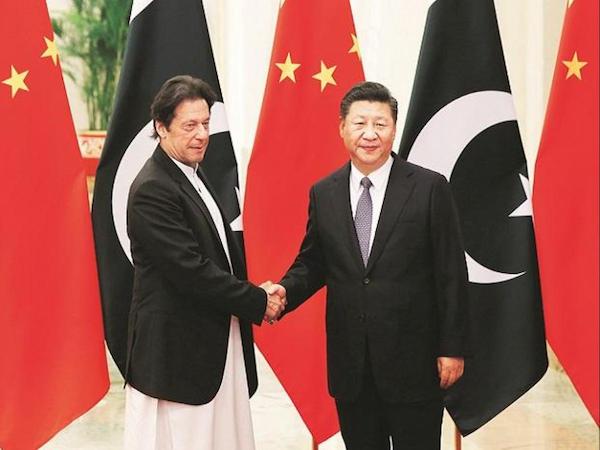
Over 140 countries and international organizations have inked agreements on jointly building the Belt and Road project with China since its announcement by Chinese President Xi Jinping five years ago. BRI aims to boost connectivity and cooperation between East Asia, Europe and East Africa. The initiative is expected to significantly boost global trade, cutting trading costs by half for the countries involved.
The BRI is arguably the most ambitious geostrategic initiative in contemporary history. It is indeed China’s economic diplomacy for half of the world, under one single policy framework It promotes closer ties between countries through development led trade growth. It requires a massive infrastructure construction program complemented by bilateral commitments covering trade and investment. BRI is also regarded as a significant geostrategic initiative, which reflects China’s changing status as an economic and military power.
The scale of the BRI is hugely ambitious. The estimated cost of BRI projects is expected to be approximately US $2.5trillion over the next decade. BRI is dynamic and continues to evolve as the priorities and interests of China and other Belt and Road countries.
BRI has been projected as winnable initiative for all the participating countries. Chinese government has selected the slogan of Contribution by All, Benefits for All for the huge BRI project. It is hoped that when it will be fully realized it makes the world more interconnected and creates more amity between nations. BRI stands for “peace”, “prosperity” and “integrity” for all. China is inviting nations to “set aside prejudices” and “revive the ancient history”. It will promote global friendship. It will build the road to peace. It will enhance interconnectivity. It will establish sense of durable security and safety. It shared future for humankind.
Moreover, BRI stands for green energy mix. In BRI high priority has been given to clean energy. Beijing attaches great importance to “renewable energy” in implementing the BRI project. As the largest project of the century, the BRI links 70 countries across Asia, Europe, and Africa through a network of railroads and shipping lanes.
The BRI is diversified and dynamic and it has not restricted itself just to trade. It is a comprehensive plan which considers other areas of cooperation between involved countries. China is willing to strengthen cooperation with BRI countries in scientific research on climate change, biodiversity and epidemics and infectious diseases. Also, President Xi, in a letter to the launching of the Alliance of International Science Organizations (ANSO) in the Belt and Road Region, called for scientific and technological cooperation among BRI countries.
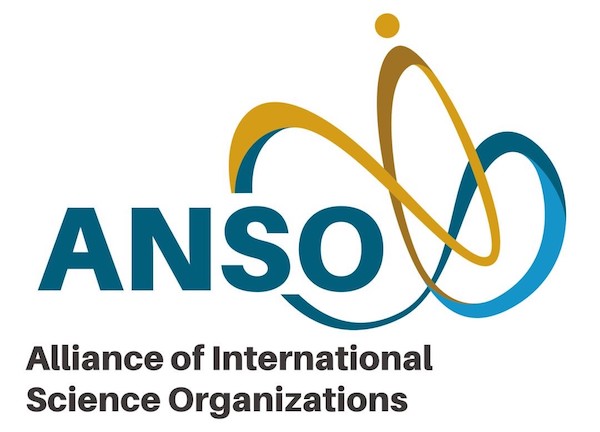
The BRI is not a Chinese plot, as some people internationally have said. It is neither the post-World War Two Marshall Plan, nor is it a Chinese conspiracy. It is a transparent initiative which does not have any hidden agenda as poorly conceived in most of the West.
The BRI is intended to act as a primary force for facilitating critical investment to build closer and stronger channels of maritime and continental connections from China to international markets. The BRI concentrates on building greater capacity through infrastructure and prioritises key sectors such as transport, communications and energy. In its conception, the BRI operates through public-private partnerships. These partnerships are intended to harness the requisite financing as well as to provide collaboration on implementing projects.
The BRI is a potentially important tool to help achieve the SDGs. The focus on infrastructure capacity and increasing connectivity can provide a practical framework that is already operating with global reach and impact.
The Belt and Road Initiative (BRI) had brought great opportunities for Pakistan. BRI would enhance connectivity, promote peace and development, better realise a community of shared future for mankind, and make people feel that tomorrow would be better than yesterday. The future development of the two countries is based on mutual interests. The mutual assistance and connectivity are of great importance to peace, harmony and common progress. Banking industry of Pakistan would be benefited more the development and expansion of the BRI in the near future. It is high time for businessmen, investors and private companies of the country to look beyond region and explore the still untapped opportunities provided by the BRI for a befitting proposition because BRI is a global engine of growth and sustainable development.




